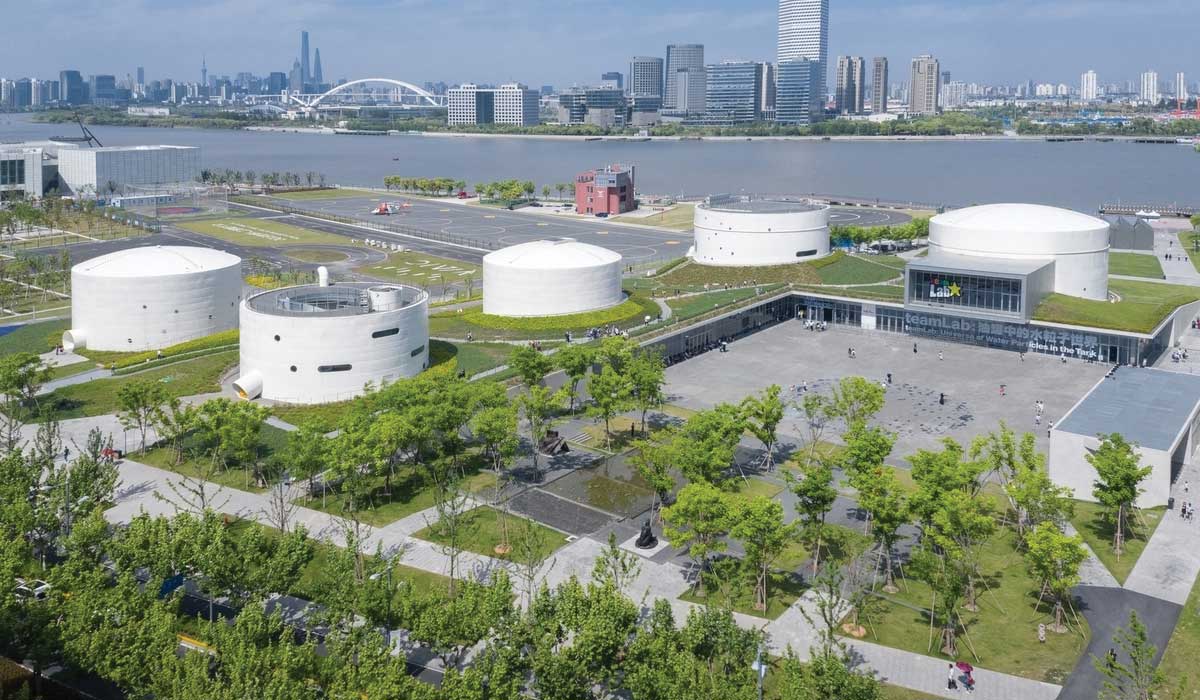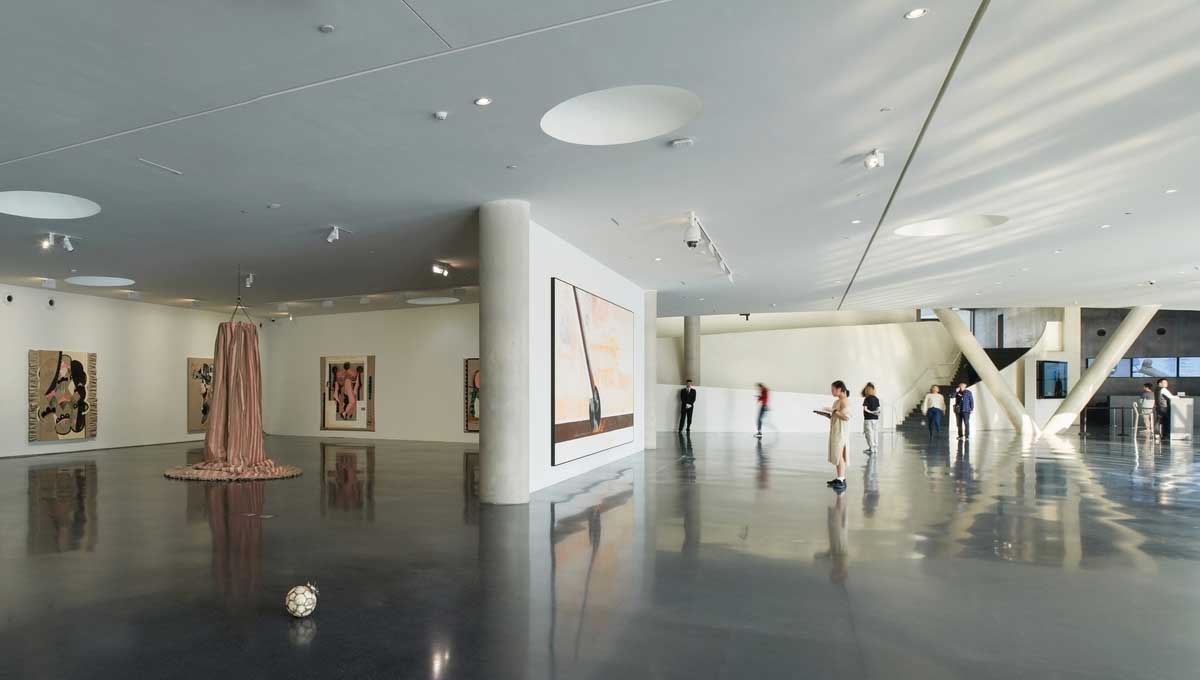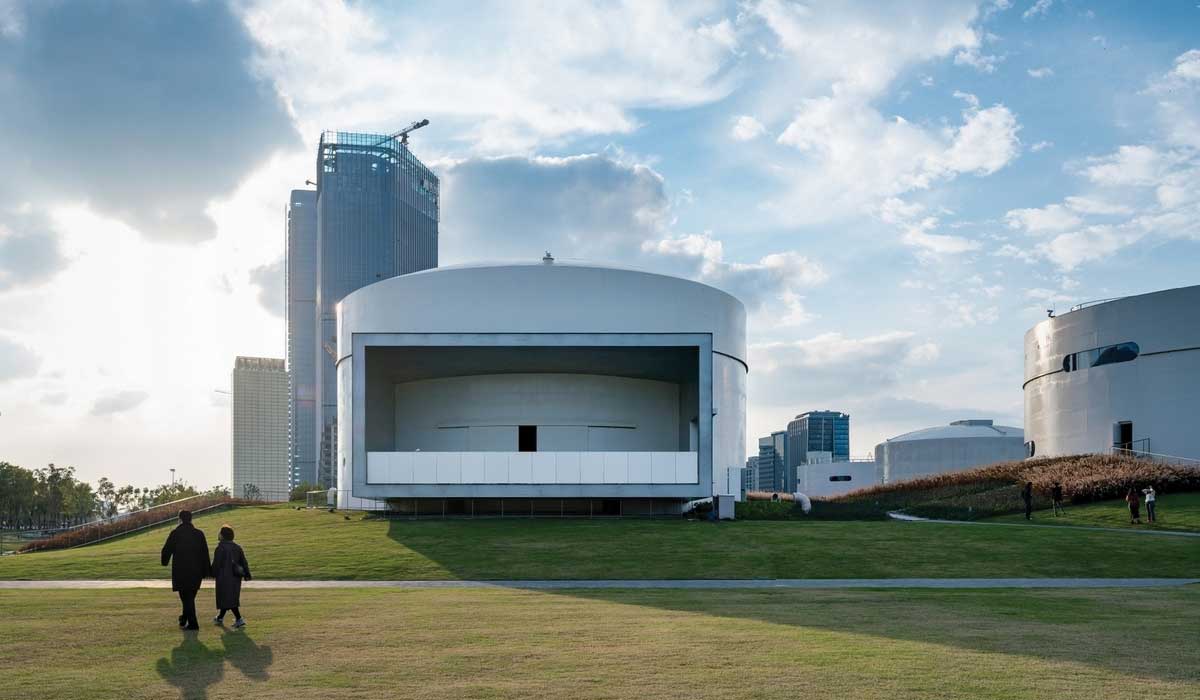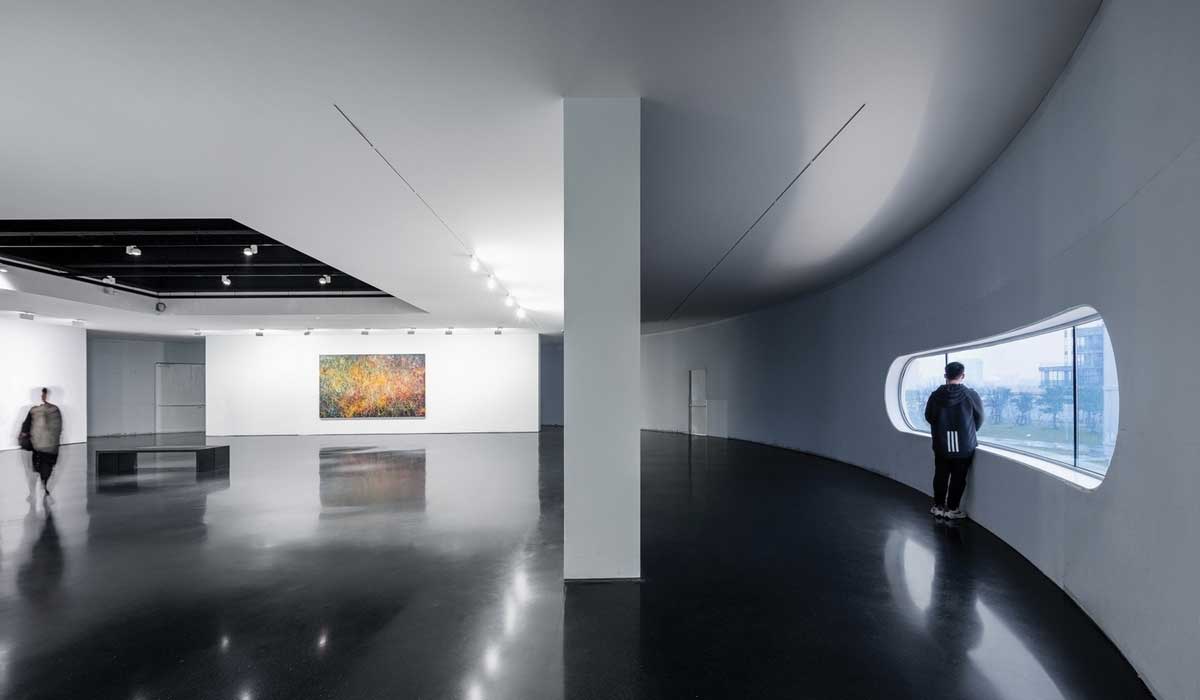Fact File
Client: Shanghai West Bund Development Group + Tank Shanghai
Program: Art Galleries, Event Spaces, Restaurant, Café, Live Music Club, Museum Offices, Art Storage
Building Area: 10,845 m²
Site Area: 47,448 m²
Location: 2380 Longteng Avenue, Xuhui District, Shanghai
Architectural and Interior Design: OPEN Architecture
Source: V2Com
 Bird’s Eye View - Photo credit: INSAW Image
Bird’s Eye View - Photo credit: INSAW ImageAlong the banks of Shanghai’s Huangpu River, five decommissioned aviation fuel tanks once stood abandoned on an empty industrial site. Today, these tanks and the surrounding site have been given new life and relevancy by OPEN Architecture.
Over the course of six years, the five tanks were converted from waste containers to a vibrant contemporary art center, with galleries and other public spaces housed within the tanks themselves. One of the world’s rare examples of the adaptive re-use of aviation fuel tanks, Tank Shanghai has attracted millions of visitors since its opening in March 2019.
 Tank 3 Interior - Photo credit: WU Qingshan
Tank 3 Interior - Photo credit: WU QingshanConceived as an art museum and an open park, Tank Shanghai is open, accessible, and seamlessly integrated with the surrounding landscape. The project not only pays tribute to the site’s industrial past, but also seeks to dissolve conventional ideas of site limitations and demarcations.
Long, sloping landscaped meadows around each tank gallery offer open access to the street and riverside, inviting visitors to move freely between the city, nature, and art – creating social inclusivity.
 Tank 5 Stage Facing to the Event Plaza Lawn - Photo credit: WU Qingshan
Tank 5 Stage Facing to the Event Plaza Lawn - Photo credit: WU QingshanCentral to the project’s design is the merging of architecture and landscape through a Z-shaped ‘Super-Surface’ - a 5-hectare landscaped swath of trees and grasses which connects the five tanks and weaves different elements of the site together. Two of the tanks sit above the Super-Surface, while the other three sit halfway below, creating free-flowing indoor public spaces and offering opportunities to access each of the tanks’ galleries from beneath.
Entrance ramps to each tank are wrapped with steel panels, which enter into dialogue with the curved structures of the existing tanks. Steps around the tanks double as seating for the café. Floor-to-ceiling windows and skylights flood these underground spaces with light and allow gallery visitors to observe seasonal changes in the park landscape beyond.
Multiple trails across the park offer visitors the opportunity to experience not only the riverfront, but other public spaces such as a stepped waterscape leading down toward a paved urban plaza, an Urban Forest of trees and local grasses, a second grassy plaza that provides open space for events like music festivals and for leisure.
 Gallery Space in Tank 4 - Photo credit: WU Qingshan
Gallery Space in Tank 4 - Photo credit: WU QingshanTwo smaller galleries, together with a myriad collection of freely accessible public art installations, are scattered across the park. Wrapped in mirrored stainless steel, the Tanks’ Reflecting Gallery is secluded within the Urban Forest. A second, multipurpose Project Space, overlooking the river and a tree-lined reflecting pool, features a saw-toothed roofline that deliberately juxtaposes the curvilinearity of the tanks.
The design strategy employed to retrofit the five tanks varies according to the requirements of the different programs housed within them. Tank 1—a two-story live-house and bar—contains a drum-shaped inner tank with curving walls that improve the space’s acoustics for musical performances. Tank 2—a restaurant—is organized around a circular central courtyard, on top of which rests a roof deck for alfresco dining. Tank 3 remains intentionally unchanged, with its original interiors offering a unique domed space for displaying large contemporary artworks and installations. The addition of an operational oculus skylight allows natural light and even rain to enter the gallery interior.
Tank 4 contains a three-level cube that offers more conventional spaces for gallery and canvas art, while Tank 5 features an additive rectangular volume that passes through the body of the tank and emerges on either side to form two stages on both ends. From the exterior the surface of all the tanks preserve their original industrial aesthetics with the addition of occasional round or capsule-shaped openings and portholes.















